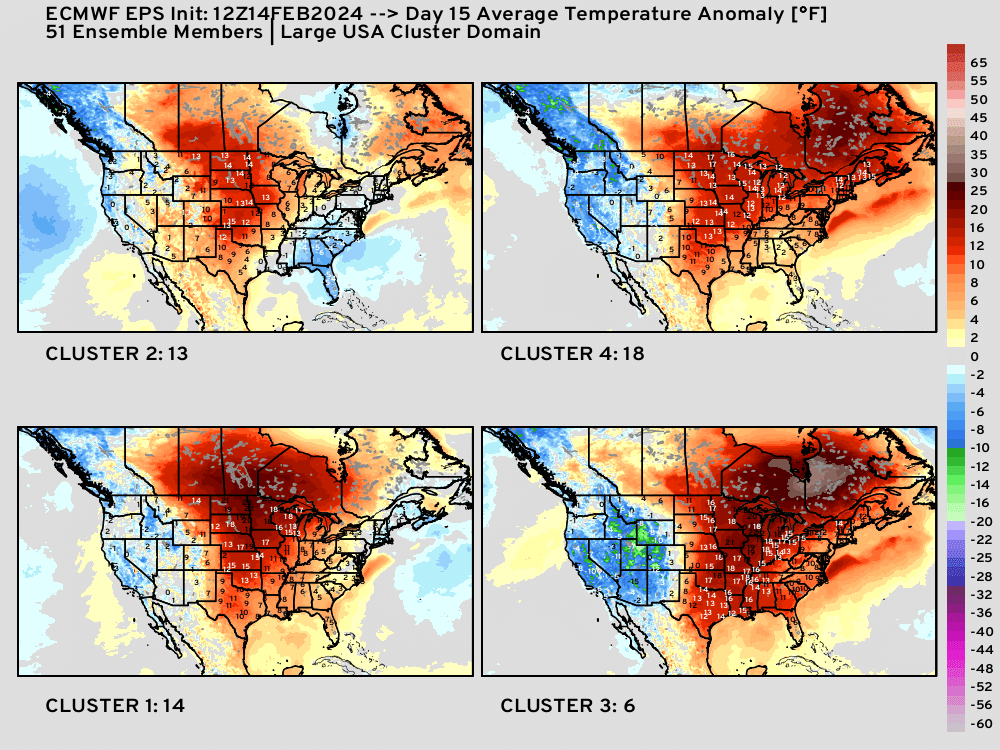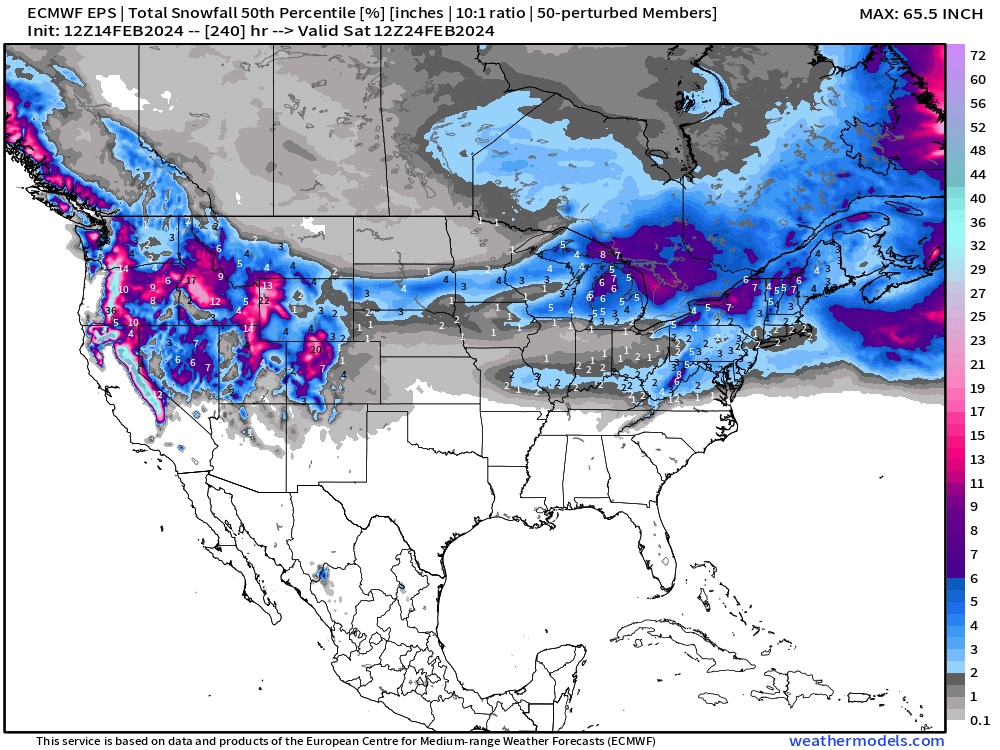Weather Trader | Wednesday Afternoon Update
Happy Valentine’s Day!
If you enjoying an evening out on the town across much of the Lower 48, then you may have some Spring fever with temperatures in the 60s into the Ohio Valley. The sunshine feels quite warm in mid-February.
Clipper Systems
During the next few days, light to moderate snowfall will occur from the upper-Midwest into the Great Lakes and then mid-Atlantic and Northeast. First, the accumulations from NWS for the next 72-hours:
Minneapolis: 5 inches
Northern Michigan and the eastern Upper Peninsula: 6-12”
NYC: ~1 inch
Boston: 2-inches
Wash DC: 2-inches
Next 7-Days Surface Weather Pattern
The fast moving storm systems have light precipitation but could make for hazardous travel if enough falls and freezes on road surfaces. The temperatures are marginal so hopefully these events are just conversational rather than impactful. Enormous moisture into the Western U.S. again as atmospheric rivers pound the state.
These storm systems look serious and impactful for California. We’ll be watching closely.
Warming Pattern to End February
No update here:
During the next 2-weeks, after brief shots of Arctic air in the Great Lakes and Northeast, a substantial warming pattern takes over North America and the Lower 48 to end February. We’re quickly running out of winter.
Clustering Tools at Weather Trader*
At Day 5, there is not usually much variety in the upper-level wave pattern, so the temperature composites should be quite similar.
However, at Day 10, we see changes in the respective 4-scenarios depicted by the 4 clusters. The population out of 51 = 11,11,11,18 with variability in the Southeast with the trough coolness and ridge strength in Canada (warmth).
At Day 15, there is widespread warmth across the central and Eastern U.S. with the majority of the members in Clusters 2-4 well above normal.
Final confirmation of the warmth: multi-model ensembles (GEPS+EPS+GEFS) with 103-members sorted into 3 clusters. I would probably use this tool most often at Day 15 to get a consensus view of the upper-level pattern.
You can see these Clustering Tools freely (for now) at WeatherTrader.com until I build the website: and continue to support these products (which will earn any subscriber to this Substack a golden ticket into the Weather Trader interface as founder/supporter, and friend of Ryan)
Lower 48 Temperatures
Thursday Lows | February 15, 2024
It’s still pretty chilly across New England and the upper-Midwest. There is subzero Arctic air locked up in Canada that is slowly sagging southward but should remain bottled up.
Thursday Highs | February 15, 2024
Chamber of Commerce weather across the southern half of the Lower 48 for mid-February well into the 60s and 70s.
7-day Total Precipitation from WPC
The atmospheric rivers will dump considerable rainfall on California! Another 8-trillion gallons in the next 7-days.
10-day Snowfall ECMWF EPS Median Accumulation
Median snowfall to come in the Northeast is brand new and does not include the previous bomb cyclone. Through 10-days, a decent smattering of 1-3 inches+ snowfall from D.C. to Boston. Upwards of 5 to 10 feet across the Sierra.
(Maps from weathermodels.com and weathertrader.com)
Thank you to my paying subscribers! Consider upgrading to a Yearly Plan if you find these updates valuable and wish to support my development at Weather Trader. Here is a little discount valid until February 20th:
Also, it allows me to provide (usually) interesting and valuable commentary on scientific topics on X. Feel free to say hello and follow on X/Twitter (@RyanMaue)
*Information about Clustering Tools
As part of new development tools that you’d typically pay a ton to view, I’ve posted in real-time a large selection of clustering tools. Please overlook the table of contents presentation on the website at Weather Trader, as that’s the final task to make a functional website.
The following is 153 ensembles from the last 3 00z/12z EPS ensemble cycles valid on Day 14 or February 27. I use 4 clusters of the 500 hPa height pattern (EOFs) and then composite temperature anomaly from the various ensembles. This is a lagged ensemble clustering approach.
This version uses the most recent model cycle (12z) but 3 different ensemble systems including the ECMWF EPS, Canadian GEPS, and NOAA EFS. There are 103 members and they are binned into their respective clusters.
We can then composite other variables including precipitation (anomaly), degree days, and height patterns in order to diagnose the various possible future Day 14s. Also, this is repeated for Asia, Europe, and soon Australia and South America.















